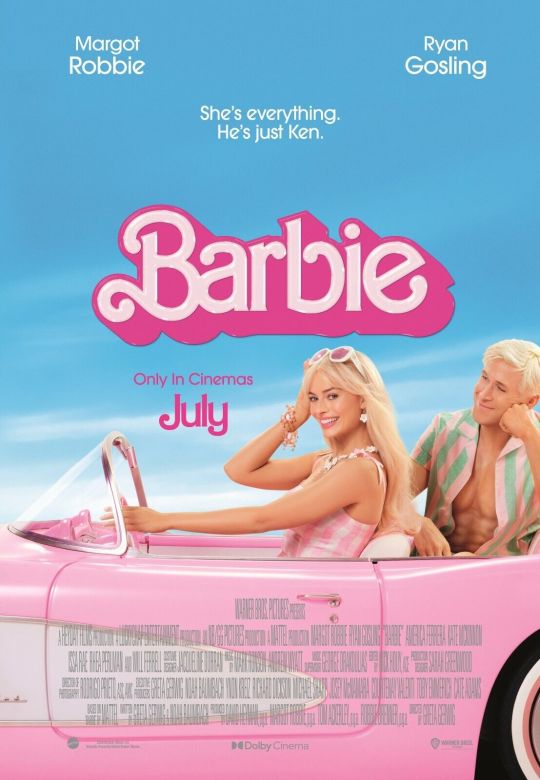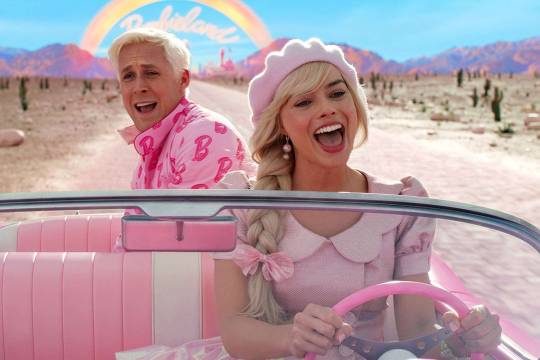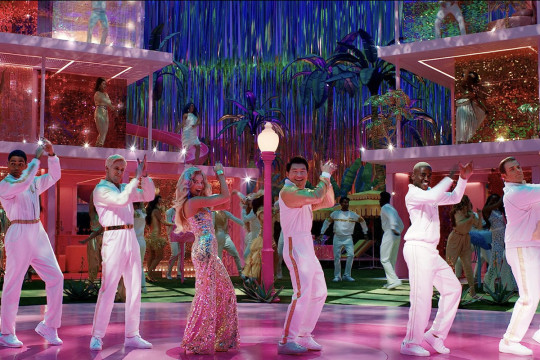#@theuncannyprofessor
Text
Persepolis Viewing Response 1
Marjane Satrapi’s film, based on her novel, “Persepolis”, is a semi-autobiographical retelling of her life during and after the Iranian revolution. It follows her as she grows up in Iran, eventually moves to Austria for school, comes back for her family, and ends with her moving to Paris indefinitely. The film explores and links the ideas of culture, belonging, and migration through Marjane’s story. “Persepolis” is unconventional as it is entirely animated, the majority of which is in black and white, and as a result it exists in the minority of other films telling similar stories. In Stacey Weber Feve’s article, “Framing the ‘Minor’ in Marjane Satrapi and Vincent Paronnaud’s Persepolis”, she explores the concept of the minor in Persepolis, emphasizing how certain framing and imagery choices replicate migratory-like movements that add to the East-West dichotomy in the film. Marjane’s feelings of never truly being home in both Iran and Europe are emphasized by invisible and open frame shots, the angles at which characters are filmed, and the “motif of cultural transference” with the jasmine flower.
2 notes
·
View notes
Text
PART 1: Barbie’s Discovery of the Real World

Barbie (2023) by Greta Gerwig is a film about self-discovery, and womanhood, where Stereotypical Barbie ventures from her picture-perfect plastic world to the real world. To unpack the themes of this through a theoretical lens, I will first explore the works of several key theorists who will provide the foundation for my analysis. The first source I am using is Karl Marx and Frederick Engels, “The Ruling Class and The Ruling Ideas”. In this work theorists Karl Marx and Frederick Engels assert that the dominant class, often represented by the bourgeoisie, sustains its dominance not solely via economic means but also by spreading ideologies that continue its power. The second text I will be analyzing is Louis Althusser’s piece“Ideology and Ideological State Apparatuses” where he claims that ideology isn't just false ideas but a system maintained by institutions that shape how we understand the world and perpetuate the ruling class's power. The next source is by Chrisitan Metz and is, “Some Points in the Semiotics of the Cinema” and argues that film can be understood as a system of signs with its own codes that communicate meaning to viewers. The final text I use is Giles Deleuze’s, “Introduction: Repetition and Difference” where Deleuze examines the role of repetition and difference in different media and draws on post-structuralist ideas to explore how these mediums challenge dominant representations. I will argue that the Barbie movie connects and engages these three theorists to demonstrate the plights of capitalism and a dominant oppressive society in order to challenge the viewer to realize their own complacency in this system . In the first two sections I will explain how their theorists work both show similarities but also differ from each other. In the third and final section I will discuss how these theorists are in conversation with each other in regards to a specific screen chosen from the Barbie movie.

Section 1: Similar Paths
Although from different perspectives and theoretical framework, through their shared engagement with various aspects of ideology, power structures, and social reproduction, commonalities can be understood among these theorists. All these theorists engage with the critique of ideology and its role in maintaining social structures. In Karl Marx and Frederick Engels work, “The Ruling Class and The Ruling Ideas”, they analyze the relationship between economic structures and ideology, emphasizing how the prevailing notions within society are shaped by the interests of the ruling class, mirroring the economic structure currently set in place(1). Introducing this concept that highlights the idea that prevailing ideologies are created to uphold the existing order and interests of the ruling class. They argue that the ruling ideas of any society reflect the dominant mode of production and function to justify the existing social order and structure. These ideologies are upheld through the creation of cultural media, which encourages adherence to societal norms. Louis Althusser extends their analysis of ideology by introducing the concept of, ideological and repressive state apparatuses. Ideological state apparatuses are a set of ideas that reflect the interests of the ruling class and can be done through institutions such as schools. While repressive state apparatuses according to Althusser is the idea of maintaining social order through violence and enforcing the will of the ruling class through institutions such as the police or the incarceration system. In Althusser's paper, “Ideology and Ideological State Apparatuses,” he suggests that these apparatuses and institutions mold individuals into accepting the dominant belief system, ultimately guaranteeing their loyalty to the current social structure. He believed that by exposing the workings of these apparatuses that it could challenge the dominant ideology and work towards social change. Christian Metz contributes to this discussion through his semiotic analysis of cinema and examines how cinema functions as an ideological apparatus, shaping and reflecting societal norms, values, and power dynamics. In “Some Points in the Semiotics of the Cinema,” Metz explores how cinematic codes and conventions construct meaning and ideology, influencing viewers perceptions and reinforcing dominant cultural narratives(2). Giles Deleuze mainly focuses on the dynamics of repetition and difference, and works to challenge traditional notions of identity and uniformity. Althusser argues that repetition isn't just about simply doing the same thing over but instead it's a way of creating change and introducing new ideas. In Deleuze's piece “Introduction: Repetition and Difference,” explores how power works through processes of repetition and difference which challenges the idea of power being based on fixed identities and social structures.(3) All these theorists critically examine how ideology is used to maintain social structures. These theorists analyze how power functions through different mechanisms. Marx and Engels focus on economics, Althusser looks at institutions, Metz examines culture, and Deleuze explores the role of concepts. They highlight the importance of understanding the ways in which dominant ideologies are produced, circulated, and internalized within society. Each theorist provides framework for understanding the influence ideology has on people, through economic relations, institutions and power structures, state apparatuses, socialization, or interpellation.(4) Despite their differing areas of focus, these theorists share commonalities in how they view power, culture, and representation.

Section 2: Divergent Paths
While Karl Marx & Friedrich Engels, Louis Althusser, Christian Metz, and Giles Deleuze all grapple with the relationship between power, culture, and representation, their approaches and areas of focus diverge significantly. Looking deeper into the specificities of their work, Marx and Engels employ a macro-level analysis through historical materialism. They view societies through the lens of class conflict, where the economic base which is the means of production determines the cultural superstructure which are the ideas and beliefs. Like I mentioned earlier, they examine how the ruling class controls the means of production and shapes the dominant ideology that reinforces their power and maintains the status quo. While Althusser, shifts the focus to the micro-level and utilizes structuralism to dissect the social structures that maintain the current power. In this context, the concept of interpellation becomes relevant, which is described by Althusser as, “that ideology ‘acts’ or ‘functions’ in such a way that it ‘recruits’ subjects among the individuals (it recruits them all), or ‘transforms’ the individuals into subjects (it transforms them all) by that very precise operation”.(5) Through the mechanisms of Ideological State Apparatuses, individuals are positioned as ideological subjects, ultimately internalizing dominant belief systems. Christian Metz delves into the world of film language, using semiotics to dissect how films create meaning. He argues that movies aren't mere mirrors reflecting reality but that they actively represent it which reinforces certain ideologies. In order to analyze the messages being conveyed viewers must understand the codes and conventions that are being used. Operating within a post-structuralist paradigm, Deleuze explores the influence of representation in various art forms such as film, and literature, with a particular emphasis on the interplay between repetition and difference.(6) While repetition may serve to reinforce existing structures, Deleuze argues that is can also create new meaning and challenge dominant ideas. Although I have talked about how power dynamics are a commonalities between the theorists it is also a framework to show the differences among each of them. Marx and Engels emphasize the clear power exercised by the ruling class through their control and means of production. They argue that change comes through this class struggles, and the working class overthrowing the ruling class establishes a classless society. On the other hand Althusser believes that the concept of Ideological State Apparatuses reveal a more precise form of power and that examining their structure works toward social transformation. Exposing the workings of Ideological State Apparatuses challenges dominant ideology and helps possibly lay down a path for social change. Metz believes that power is established through the control of cinematic codes which then shapes the interpretation of film. Metz's analysis guides viewers to critically deconstruct the codes used in film, and enables them to resist their manipulative power. On the other hand Deleuze believes that power is more fluid, it is constantly changing and the way to destabilize dominant meanings is through art such as film. In conclusion, although these theorists share a broad interest in power, culture, and representation, their specific areas of focus, methodologies, and approaches to dismantling power structures create a rich variety of ideas for understanding the complex interplay between these forces.

0 notes
Text
Response 3
In Patricia Oman's analysis of Show Boat, she underscores the contrast between the vitality of Black and folk culture represented by Black characters and songs against the backdrop of the white, sterile, and rehearsed main plot. This argument provides a lens through which to interpret the dynamics of race and culture within the film.

One scene that particularly exemplifies this argument is the performance of "Can't Help Lovin' Dat Man" by the character Julie, a black woman, amidst the predominantly white cast. In this sequence, the vibrancy and authenticity of black culture stand in stark contrast to the more polished and artificial aspects of the main plot. The song, with its soulful melodies and emotional depth, serves as a poignant expression of Julie's experiences and struggles. It also offering a glimpse into the richness of black culture within the confines of a predominantly white narrative.
Moreover, the camera angles employed create a sense of inclusivity and intimacy, particularly through the use of circular space as noted by Oman. By positioning the camera to capture Joe and his surroundings in a circular manner, Whale not only showcases the character's connection to the environment but also symbolically invites the audience to empathize with his struggles.
@theuncannyprofessor
2 notes
·
View notes
Text
Show Boat
In James Whale's 1936 film adaptation of "Show Boat," the performance of "Ol' Man River" by Joe, the Black stevedore, correlates with Patricia Oman's analysis. Oman highlights the importance of the setting and its portrayal of the American South, particularly in how it reflects broader societal issues of race and class. As Joe sings about the hardships faced by African American laborers, Whale's direction emphasizes the vastness of the Mississippi River, serving as a backdrop to Joe's lamentations. This juxtaposition of the individual against the vast, indifferent landscape underscores the systemic injustices embedded within society.
Moreover, Whale employs cinematography to capture Joe's isolation amidst the bustling activity of the riverfront, emphasizing his marginalization within the social hierarchy. The use of lighting further accentuates the contrast between light and shadow, symbolizing the hopelessness experienced by marginalized communities.
Through Whale's meticulous attention to detail in mise-en-scène and cinematography, this scene becomes a commentary on the enduring legacy of racial inequality in America. It amplifies Oman's argument regarding the film's regionalist themes and contributes to a richer understanding of its artistic and social significance.
youtube
@theuncannyprofessor
0 notes